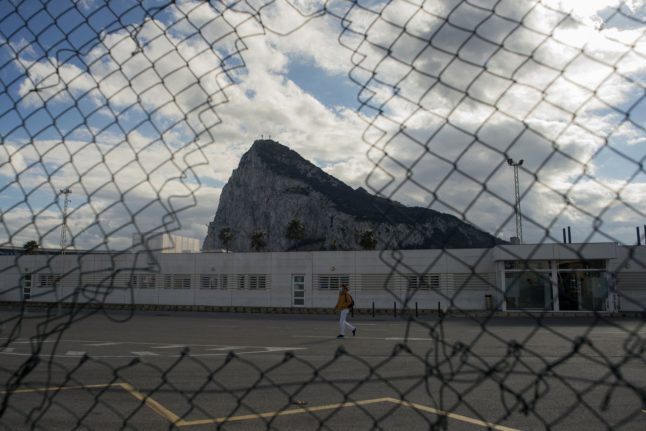Spanish police expelled four British soldiers from Spain on Monday night, removing them from the country and sending them back to Gibraltar after it emerged that the four Royal Navy personnel had entered Spain illegally while “posing as tourists”, as the Spanish press has reported.
The incident comes a week after the British Navy carried out military drills in the waters surrounding Gibraltar, the British overseas territory that Spain still claims sovereignty of, and amid the seemingly never-ending negotiations between Spain and the UK to finally settle a post-Brexit deal.
READ ALSO: Gibraltar Brexit deal ‘close’ as Brits crossing into Spain use fake bookings
The expulsions, now reported in the Spanish press by Europa Sur and confirmed to El Periódico de España by official sources, occurred after the four soldiers arrived in Gibraltar on a civilian flight and entered into Spain. They also had return tickets via Gibraltar.
They then reportedly passed themselves off as tourists and entered Spain on foot, staying at a four-star hotel in La Línea de la Concepción, the town in the Cádiz province of Andalusia that borders Gibraltar.
Stranger yet is that they crossed the border at La Línea on up to three occasions in the space of a few hours.
READ ALSO: What Brits need to know before crossing the border from Gibraltar to Spain
Spanish authorities detected their presence because two of the soldiers tried to return to Gibraltar at night.
At the border, Spanish police officers enquired as to the reason for their entry, to which the soldiers replied that they were on their way to work and brandished British military documentation.
The police decided that their entry into Spain had been irregular because they did not meet the Schengen Borders Code requirements demanded of non-EU citizens entering EU territory.
According to Europa Sur, Spanish police then asked the two soldiers to call their colleagues in the hotel in order to collect their luggage and return to Gibraltar, which took place at midnight on Monday 18th March.
The Spanish press has stated that it is common for soldiers to try to stay in Spanish territory by concealing their military status and entering while posing as tourists.
The motive for the soldiers’ presence, particularly their repeated trips across the border, remains unknown.
The military drills in the area seem to suggest that the soldiers may have taken part in or be due to take part in further exercises and wanted to enter as tourists.
Spanish media also suggests that they could have been testing the porosity of the border, though these claims remain unsubstantiated.
Gibraltar’s post-Brexit status still remains unresolved. The EU and UK government are now onto their 18th round of treaty negotiations after the framework agreement between London and Madrid made on New Year’s Eve 2020 essentially ‘fudged’ the border issue, leaving Gibraltar’s status within the Schengen area undefined.
Spain’s Foreign Minister José Manuel Albares said in late-2023 that “we are very, very close” to finalising a Brexit agreement.
“I would sign a deal with Britain over Gibraltar tomorrow,” Albares told journalists at the time. Yet no agreement was made, despite the Minister’s positivity, nor the appointment of former UK Prime Minister David Cameron as Foreign Secretary.
Albares’ comments came at a time when it was reported in the Spanish press that many UK nationals have been using fake hotel bookings in order to try and bypass the Schengen rules and trick their way through border checks.




 Please whitelist us to continue reading.
Please whitelist us to continue reading.
Member comments